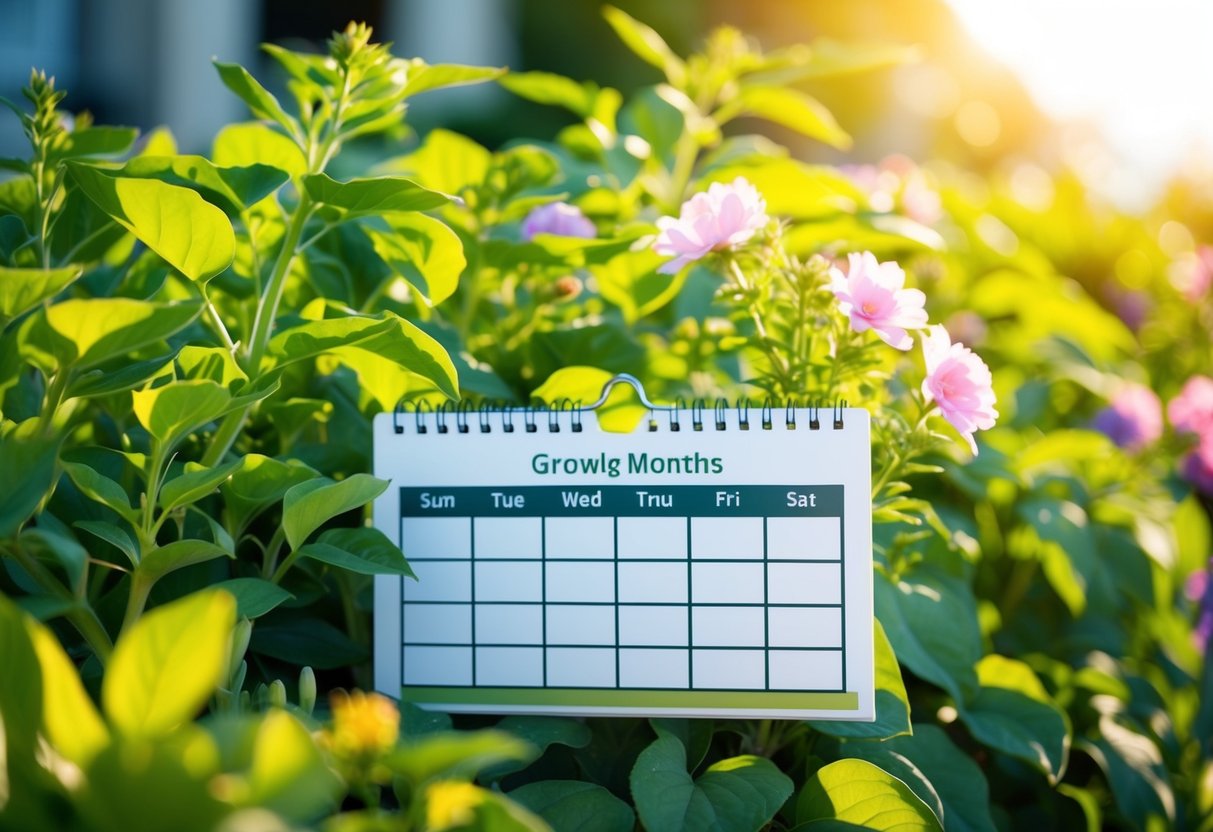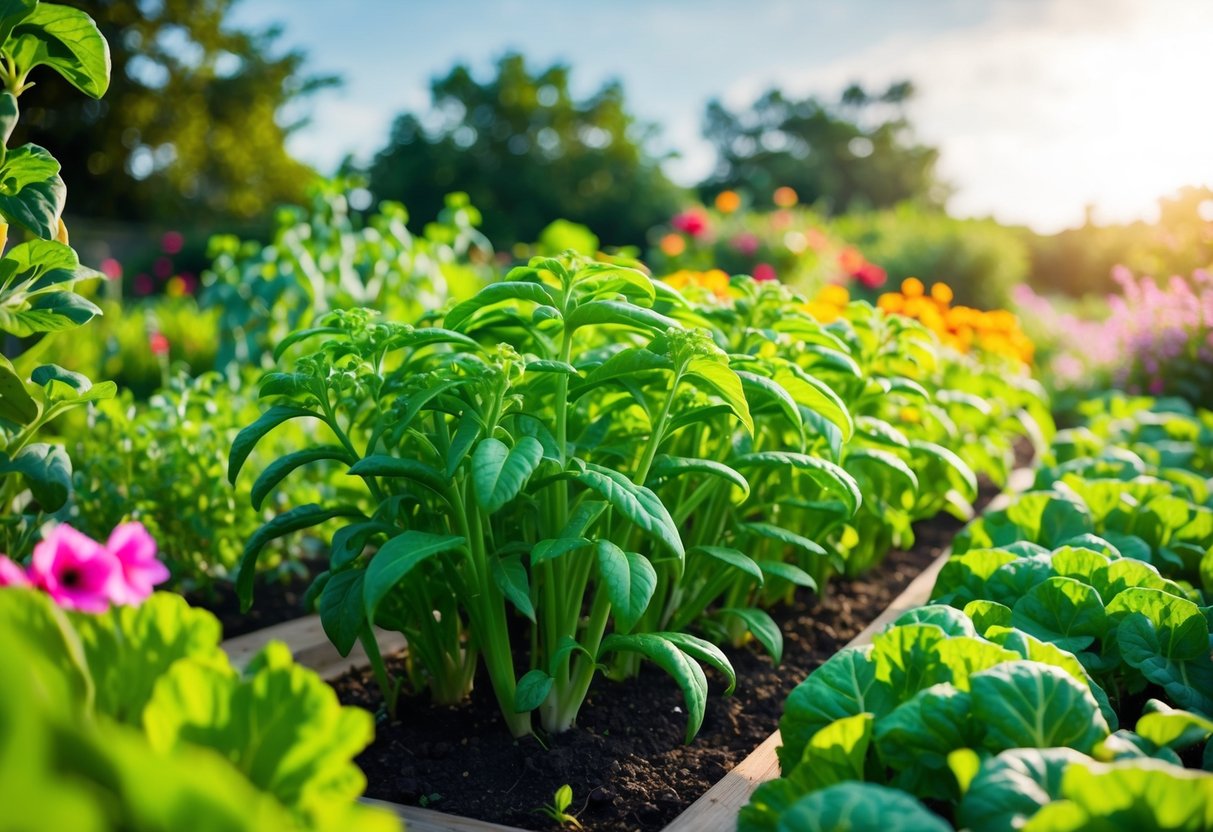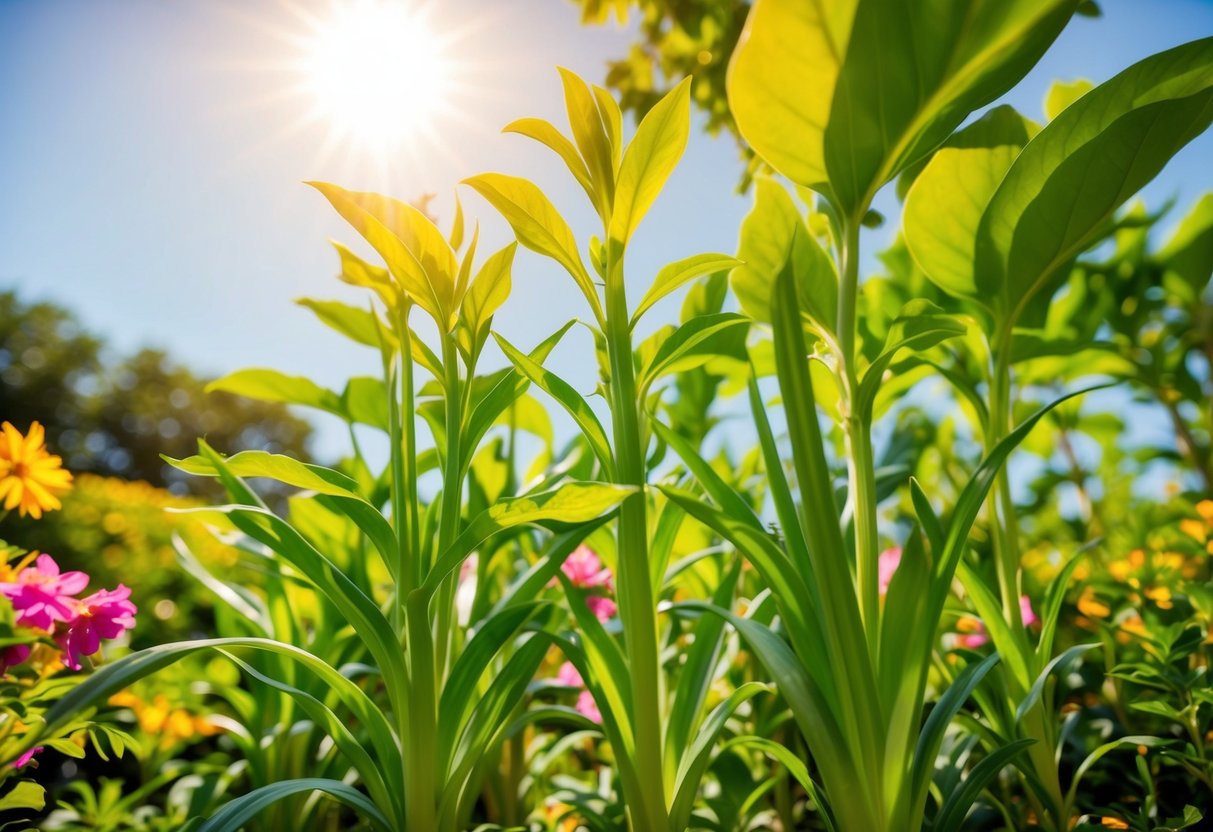What Months Do Plants Grow Fastest? Discover Optimal Growing Seasons
Have you ever wondered when plants burst into life, growing faster and fuller than ever? Plants generally grow fastest during the spring and summer months. Warm temperatures, longer days, and increased sunlight create perfect growing conditions for many types of plants. If you’re keen on planting a vegetable garden, this is a great time to see explosive growth.

Fast-growing plants like zucchini and bush beans thrive in these seasons, giving you a quicker harvest. For example, zucchini and squash varieties are known for their rapid growth during this time, making them ideal for gardeners who can’t wait to see results. Don’t forget that the weather and conditions in your area might shift these timelines slightly, so keep an eye on the local climate.
Setting up your garden to take advantage of peak growth times can maximize your harvest. You’ll want to ensure your plants get plenty of sun and proper watering to truly thrive. Whether you’re new to gardening or a seasoned pro, understanding when growth speeds up can make your garden flourish.
Understanding Plant Growth Cycles

Plants grow at different speeds depending on the time of year and their specific life cycles. Factors like humidity and soil type play crucial roles in how quickly plants develop, making it important to know the best times and conditions for growth.
Optimal Growing Seasons for Plants
The speed at which plants grow often depends on the season. Many plants, especially vegetables like lettuce, peas, and cucumbers, grow fastest in spring and early summer when the weather is mild with plenty of sunlight.
Humidity and temperature are also crucial. High humidity can support better growth in some plants by keeping leaves hydrated, but too much can encourage diseases.
Soil type affects growth rates too. Light, sandy soil warms up quickly in spring, speeding up plant growth. Clay soil retains more water, which is beneficial in summer but can slow growth in cooler months. For fast-growing vegetables, maintaining well-drained, nutrient-rich soil is key to maximizing growth during their peak seasons.
Annuals and Perennials
Annuals like nasturtium, cosmos, and zinnia complete their life cycle in one growing season. They grow, bloom, and die within a year, often peaking in growth during warmer months. Annuals need consistent care and are often used for their vibrant, seasonal flowers.
Perennials live for several years and have different growth patterns. They might not grow as rapidly initially, as they focus on establishing strong root systems. Once established, they bloom each year without needing to be replanted. These plants often thrive in stable, long-term soil conditions where temperature and humidity levels are somewhat moderate. Understanding these cycles can help you choose the right plants for your garden based on the needs of your climate and soil.
Ideal Growing Conditions

Growing plants successfully requires attention to soil quality and sunlight, among other factors. By understanding these elements, you can create the best possible environment for your garden.
Soil Quality and Type
For healthy plants, it’s important to choose the right soil type. Vegetables like kale, bok choy, and broccoli thrive in well-drained, loamy soil rich in organic matter. This type of soil holds moisture without becoming waterlogged, ensuring that roots can access both water and air.
Consider testing your soil’s pH level. Vegetables usually prefer a pH of 6.0 to 7.5. Adding compost or well-rotted manure can improve soil structure and provide essential nutrients.
If your soil is sandy or clay-heavy, consider mixing in organic materials. Sandy soil drains too quickly, while clay may retain too much water. By improving the soil, you give your plants a better foundation to grow and develop.
Sunlight and Humidity Levels
Plants need plenty of sunlight for photosynthesis. Most vegetables require at least six hours of direct sunlight per day. Position your garden to maximize sun exposure, especially for sun-loving plants like kale and broccoli.
Humidity also plays a role in plant growth. Most plants prefer humidity levels between 40-60%. High humidity can cause diseases, while low humidity may dry out plants. Watering early in the morning helps maintain the right moisture level.
For areas with high humidity, ensure good air circulation around plants. This can prevent mold and mildew, which thrive in damp conditions. Take note of your local climate and plan watering schedules and plant placement accordingly.
Fast-Growing Plants and Vegetables

When you want quick results from your garden, focusing on fast-growing plants and vegetables can be very rewarding. Certain vegetables like radishes and arugula grow quickly and are easy to care for. Ornamental plants like zinnias and marigolds also offer fast growth and beautiful blooms.
Vegetables That Thrive in Speed
Radishes are some of the fastest-growing vegetables, ready for harvest in just 20-25 days. You can plant them in small spaces and enjoy their spicy flavor in no time. Similarly, arugula can be harvested in about 30 days, adding a peppery taste to your salads.
If you’re looking for an easy-to-grow green, try spinach, which takes about 40 days to mature. Carrots also grow relatively fast, especially baby carrots, which are ready in about 50 days. Bush beans and green beans are other excellent options, maturing in approximately 40-65 days depending on the variety.
Ornamental Plants and Flowers
Fast-growing flowers like zinnias and marigolds can brighten up your garden quickly. These blooms come in a range of colors, and you can grow them in either pots or garden beds. Marigolds not only offer beautiful blooms but also help repel common garden pests.
Plumbago is a strong choice if you’re looking for a shrub that grows quickly and blooms with lovely blue flowers. Loropetalum is another option with its striking purple leaves and vibrant pink flowers. These plants can provide a colorful display and grow quickly, making them excellent choices for impatient gardeners.
Gardening Techniques for Accelerated Growth

To help your plants grow faster, focus on methods that provide the right amount of water and nutrients. Understanding how to water effectively and fertilize properly can make a big difference in the health and growth rate of your garden.
Effective Watering Practices
Watering is crucial for fast growth. You want to make sure that plants like okra and snow peas receive enough moisture without getting waterlogged. Typically, early morning is the best time to water since it helps prevent evaporation and fungal diseases.
Using drip irrigation systems can be especially effective. They deliver water directly to the roots, reducing waste and improving growth. You can also use a moisture meter to check soil conditions. This tool helps you know when it’s time to water and when it’s not necessary.
Mulching is another helpful technique. Applying a layer of mulch helps retain soil moisture and keeps the roots cool. Just remember to not over-water. While plants need moisture, too much can lead to root rot and slow down their growth.
Proper Fertilization
Fertilization ensures that your plants, like green onions and sweet peas, get all necessary nutrients. Selecting the right fertilizer type and applying it properly is crucial for accelerated growth. Balanced fertilizers with equal parts of nitrogen, phosphorus, and potassium work well for most plants.
Organic options, such as compost, add nutrients and improve soil structure. Apply fertilizers during the growing season to encourage faster development. Always follow package instructions to avoid over-fertilization, which can harm your plants.
Using liquid fertilizers can provide an extra boost. When applied as a foliar spray, they supply nutrients faster than granular types. Make sure to spray either early in the morning or late in the evening to prevent leaf burn.
Plant Care and Maintenance

Proper care and maintenance are vital to ensure your plants grow healthily and produce maximum yields. Focus on timely pruning, understanding when to harvest, and protecting your plants against pests and diseases. These are all essential practices for a thriving garden.
Pruning and Harvesting Timeframes
Pruning helps keep plants healthy by removing dead or overcrowded branches. For hops, trim in early spring to encourage vigorous growth. With zucchini, harvest regularly to promote continuous production.
Turnip greens and mustard greens benefit from frequent trimming—snip leaves when they’re young for the best flavor. Cress also grows quickly; begin harvesting just three weeks after planting.
Petunias need regular deadheading to produce more blooms. Similarly, prune butterfly bushes in early spring for optimal flowering. Regularly assess and adjust pruning based on your plants’ specific needs.
Pest Control and Disease Prevention
Keeping pests away is crucial. Sunflowers may attract aphids, so consider introducing beneficial insects like ladybugs. For sweet peas, check for signs of mildew and maintain good air circulation.
For mustard greens and turnip greens, watch for caterpillars and remove them by hand. Implement crop rotation and avoid over-watering to prevent disease spread.
Use insecticidal soap for petunias if insect infestations occur. Keep the garden clean and free of debris to reduce pest habitats. Regular monitoring allows for quick action, protecting your plants effectively.







